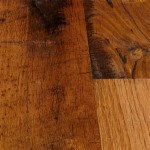Hardwood Flooring: Nails vs. Staples
When installing hardwood flooring, the choice between nails and staples often arises. Both methods have their advantages and disadvantages, and the best option depends on factors such as the type of hardwood, subfloor, and installation conditions. In this article, we'll explore the essential aspects of each method to help you make an informed decision.
Nails
Nails are a traditional method for installing hardwood flooring. They are driven into the tongue of the flooring and into the subfloor, creating a strong and durable connection. Nails come in various sizes and types, including:
- Ring nails: Smooth-shanked nails with a small head that sinks into the wood.
- Screw nails: Nails with a threaded shank that provides extra holding power.
- Cleats: Nails with a wide head that covers the tongue of the flooring.
- Strong and durable connection
- Can be adjusted or removed easily if needed
- Less likely to cause damage to the flooring
- Noisy during installation
- Can leave visible nail holes
- May not be suitable for all types of hardwood
Staples
Staples are a more modern method for installing hardwood flooring. They are fired into the tongue of the flooring and into the subfloor using a pneumatic nailer. Staples come in different gauges and lengths to suit various flooring thicknesses and subfloor types.
Advantages of Staples:- Quicker and more efficient installation
- Less noisy than nails
- Smaller and less visible than nail holes
- Less durable than nails in some cases
- Can be more difficult to adjust or remove
- May not be suitable for all types of hardwood
Factors to Consider
When choosing between nails and staples for hardwood flooring, consider the following factors:
- Type of hardwood: Some hardwoods are more suitable for nails, while others perform better with staples.
- Subfloor: The type of subfloor can influence the choice of fasteners. For example, staples may be better for plywood subfloors, while nails may be preferred for concrete subfloors.
- Installation conditions: Factors such as moisture levels and temperature can affect the effectiveness of nails and staples.
- Desired durability: Nails generally provide a more durable connection, but staples may be sufficient for less demanding applications.
- Visibility: Nail holes are more visible than staple holes, which may be a consideration for aesthetic purposes.
Conclusion
The choice between nails and staples for hardwood flooring installation depends on several factors. Nails offer strength and durability, while staples provide convenience and less visibility. By understanding the advantages and disadvantages of each method and considering the specific requirements of your project, you can make an informed decision that will ensure a successful and long-lasting hardwood flooring installation.

Fitting Wood Flooring Nail Vs Staples And Beyond Blog

Deciding Between Cleats Vs Staples When Nailing Your Hardwood Floor Diy Floors Unique Wood

Cleat Nails Vs Staples An Overview Hardwood Floors

Cleat Nails Vs Staples An Overview Hardwood Floors

Floor Staplers Vs Cleat Nailers The Hardwood Flooring Experts Petes Floors

How Many Nails Staples For Hardwood Floor Installation

Fitting Wood Flooring Nail Vs Staples Esb

Flooring Normal To See Staples In Hardwood Floor If Not How Best Handle Fill Home Improvement Stack Exchange

Difference Between Hardwood Floor Fasteners Concord Carpenter

Installing Solid Hardwood Floors Fastening By Nails Or Staples








